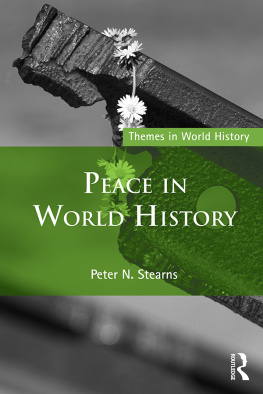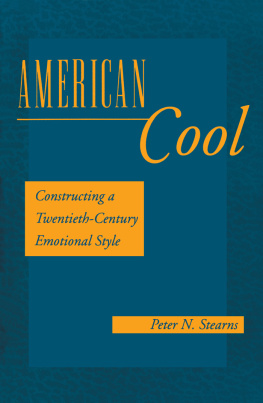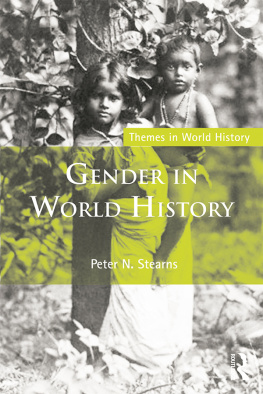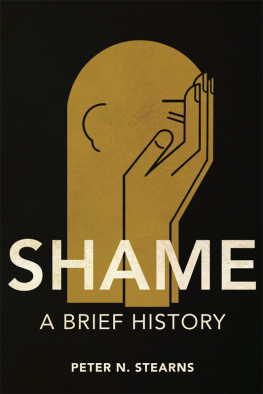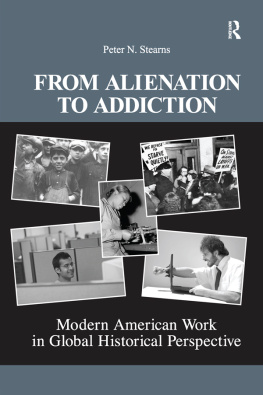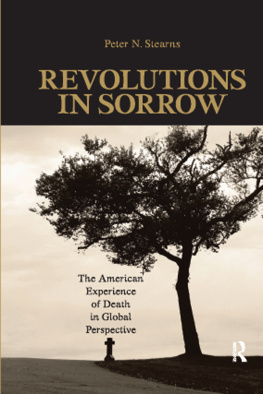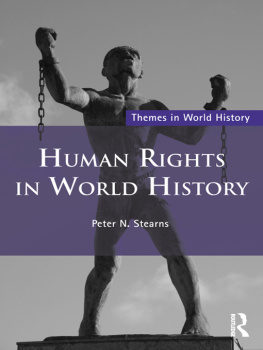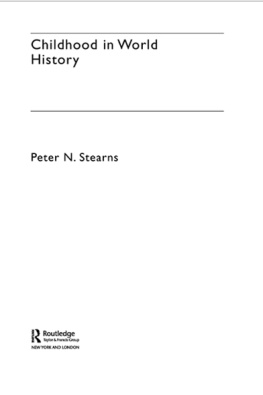Peace in World History
In Peace in World History, Peter N. Stearns examines the ideas of peace that have existed throughout history, and how societies have sought to put them into practice. Beginning with the status of peace in early hunter-gatherer and agricultural societies, and continuing through the present day, the narrative gives students a clear view of the ways people across the world have understood and striven to achieve peace throughout history. Topics covered include:
comparison of the Pax Romana and Pax Sinica of Rome and China
concepts of peace in Buddhism, Christianity, and Islam, and their historical impact
the place of peace in the periods of expanding empires
the emergence, starting in the nineteenth century, of both formal schemes to promote peace and increasingly destructive technologies for warfare.
Moving away from the view of history as a series of military conflicts, Peace in World History offers a new way of looking at world history by focusing on peace. Showing how concepts of peace have evolved over time even as they have been challenged by war and conflict, this lively and engaging narrative enables students to consider peace as a human possibility.
Peter N. Stearns is Provost and a Professor of History at George Mason University.
Themes in World History
Series editor: Peter N. Stearns
The Themes in World History series offers focused treatment of a range of human experiences and institutions in the world history context. The purpose is to provide serious, if brief, discussions of important topics as additions to textbook coverage and document collections. The treatments will allow students to probe particular facets of the human story in greater depth than textbook coverage allows, and to gain a fuller sense of historians analytical methods and debates in the process. Each topic is handled over time allowing discussions of changes and continuities. Each topic is assessed in terms of a range of different societies and religions allowing comparisons of relevant similarities and differences. Each book in the series helps readers deal with world history in action, evaluating global contexts as they work through some of the key components of human society and human life.
Gender in World History
Peter N. Stearns
Consumerism in World History: The Global Transformation of Desire
Peter N. Stearns
Warfare in World History
Michael S. Neiberg
Disease and Medicine in World History
Sheldon Watts
Western Civilization in World History
Peter N. Stearns
The Indian Ocean in World History
Milo Kearney
Asian Democracy in World History
Alan T. Wood
Revolutions in World History
Michael D. Richards
Migration in World History
Patrick Manning
Sports in World History
David G. McComb
The United States in World History
Edward J. Davies, II
Food in World History
Jeffrey M. Pilcher
Childhood in World History
Peter N. Stearns
Religion in World History
John Super and Briane Turley
Poverty in World History
Steven M Beaudoin
Premodern Travel in World History
Steven S. Gosch and Peter N. Stearns
Premodern Trade in World History
Richard L. Smith
Sexuality in World History
Peter N. Stearns
Globalization in World History
Peter N. Stearns
Jews and Judaism in World History
Howard N. Lupovitch
The Environment in World History
Stephen Mosley
Agriculture in World History
Mark B. Tauger
Science in World History
James Trefil
Alcohol in World History
Gina Hames
Human Rights in World History
Peter N. Stearns
Peace in World History
Peter N. Stearns
Peace in World History
Peter N. Stearns
First published 2014
by Routledge
711 Third Avenue, New York, NY 10017
And by Routledge
2 Park Square, Milton Park, Abingdon, Oxon OX14 4RN
Routledge is an imprint of the Taylor & Francis Group, an informa business
2014 Taylor & Francis
The right of Peter N. Stearns to be identified as author of this work has been asserted by him in accordance with sections 77 and 78 of the Copyright, Designs and Patents Act 1988.
All rights reserved. No part of this book may be reprinted or reproduced or utilised in any form or by any electronic, mechanical, or other means, now known or hereafter invented, including photocopying and recording, or in any information storage or retrieval system, without permission in writing from the publishers.
Trademark notice: Product or corporate names may be trademarks or registered trademarks, and are used only for identification and explanation without intent to infringe.
Library of Congress Cataloging-in-Publication Data
Stearns, Peter N.
Peace in world history / Peter N Stearns.First edition.
pages cm.(Themes in world history)
Includes bibliographical references and index.
1. World history. 2. Peace. I. Title.
D62.S74 2014
303.66dc23
2013042311
ISBN: 9780415716604 (hbk)
ISBN: 9780415716611 (pbk)
ISBN: 9781315879598 (ebk)
For Holden Jack, and a life of peace
Christina Regelski provided invaluable research assistance for this book. Laura Bell went beyond the call of duty in readying the manuscript. My wife, Donna Kidd, encouraged the project from concept stage onward. I always appreciate the support of the Routledge series editor, Kimberly Guinta. Interaction with many faculty in George Masons School of Conflict Analysis and Resolution has educated me in many ways. Im grateful to Kevin Avruch for his interest and guidance. My admiration also goes to Dr. Daisaku Ikeda, and the inspiration his ideas on peace have provided.
World history has not been kind to peace, either in human experience or in scholarship. While all sorts of people in many different societies and time periods have craved peace, a successful devotion to peace is not usually as dramatic a goal as the pursuit of war. Most societies spend more time not at war than in war, but this statement is complicated by the extent to which wars may be planned or prepared during apparently peaceful interludes; and, as we will discuss, it is certainly a rare moment in modern human history when a significant war is not occurring somewhere. Thats true today, and it has been true in the past.
Its also true that in contrast to at least some other historical subjects its impossible to paint a historical picture that suggests clear progress toward peace, despite some important efforts, at various points in time, in that direction. We will see that there is a serious contention that right now, over the past 20 years, that the rate of global conflicts has been declining, and we have to assess this claim and whether it suggests a new stage in human affairs. But certainly that past century has been a century of bloodshed, as people have learned how to kill each other in larger numbers than ever before. Here too, the study of peace may seem to go against the standard tide of history.
Certainly historians have not for the most part treated peace kindly. There are far more studies of war than of peace. Survey histories, in most national and regional traditions, spend more time on war. The same is now true of the growing field of world history; to take a crude measure, its the rare index in a major textbook that lists peace as a topic at all. Of course there are countercurrents. A beginning has been made in writing historical studies of peace, and certainly specific moments a major treaty, the emergence of organizations devoted to peace have their place. As a genre, peace study is gaining ground, and historical background normally plays a role here. Still, theres little doubt that most people, at least in our society, think of history more in terms of war than of peace, and most history students gain little systematic knowledge about peace as a topic.


